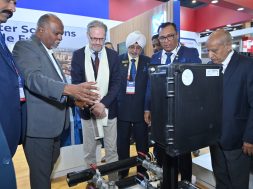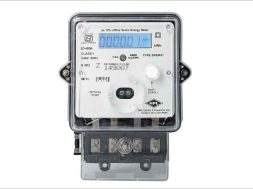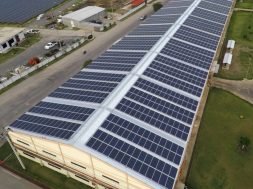Rising cost, less manpower major roadblocks

Over the years, Indian cities have undergone momentous economic and social growth, witnessing huge migration from tier-II and tier-III cities and rural parts to tier-I city. As a result, urban India is now grappling with issues like overpopulation and strained infrastructure, which have affected the quality of life. The influx in urban region is likely to further aggravate stress in existing infrastructure.Thus, current scenario calls for strengthening and improving upon the urban belt by developing new cities, enhancing existing infrastructure, according to Abil Singh Baghel, Head S&M, Phenix Construction Technologies.
Discuss the latest trends and applications in PEB with respect to smart cities?
The smart cities shall necessarily call for having an efficient intelligent data management system for smooth governance, smart waste management system, robust connectivity to airport, railway, efficient inter transport arrangement, technologically-advanced hospitals, business centres, housing (affordable and mass), logistics park, food park, textile parks, and employment, etc.
PEB technology fits the bill in addressing the aforementioned need owing to its cost efficient, lighter design and speedy deliverables. Data-centre buildings, railway station, metro stations and depots, aircraft hangers, multi-storeyed commercial buildings and hospitals with fire proof paint coatings and sports complex are some of the examples where PEB technology comes in handy.
Additionally, owing to its inherent characteristics like recyclable material content, energy efficient offering (SRI as high as 78 can be employed in roof), PEB is eco-friendly.
How do you see the demand for PEBs this year?
The PEB market in India is witnessing growth resulting from unparallel enlargement in infrastructure space, and the wider acceptance of PEBs across all spectrum. Sectors such as automotive, power, logistics, pharma, FMCG, and capital goods provide huge growth opportunity for PEB in India.
Frost & Sullivan’s Analysis of the Indian PEB market finds that the market earned revenues of Rs 5000+ crore in 2012 and estimates this to reach Rs 22,000+ crore in 2019.
The biggest constituent of steel usage is structural steel, which was hovering at around 5.0 to 5.5 million MT in 2011, of which PEB accounted for approximately 9-10 per cent market in India. It is likely to witness 10.5-11million MT by the year 2019.The narrowing gap between structural steel and PEB shall further enlarge PEB landscape.
Infrastructure growing at a pace of 20 per cent shall further fuel in the demand for metal buildings owing to its larger acceptance and popularity that cuts across all the realm.
The impetus in manufacturing segment, renewable energy, new smart cities, renewable energy, non- exponential growth in commercial buildings (20 billion square feet by 2030 as against 7 billion square feet in 2010), spur in logistics (growing at a pace of 22 per cent) shall be a sure shot feeder for the PEB sector which currently is overseeing CAGR 11-13 per cent and shall have scope to keep pace with the infrastructure growing at 20 per cent.
What are the benefits of PEB?
It is universally known that metal buildings owing to their high recyclable content, faster occupancy, cost efficiency, ease of construction, design versatility, low maintenance, factory-controlled quality, merits over other material of construction, thereby securing phenomenal growth in application all across the spectre. Design versatility and standardisation encompassing sophisticated tools for flawless structure analysis and estimation, lighter in weight, ease of construction, earthquake-resistant frame, minimal interface, faster deliverables, sustainability, durability, and lower carbon footprints are the other virtues of PEB.
Please share your outlook for the PEB market this year.
There has been an outburst in high-rise building demand that utilises high tensile steel with yield strength 450 MPA which calls for a specialised manufacturing set up and highly skilled erection methodology. High-rise buildings are an untapped area offering huge potential. These buildings were erstwhile made in RCC, but metal building owing to its faster dispensation, energy efficiency and factory controlled quality norms are the most personage solution.
There has been now an overgrowing insistence upon extensive usage of design in accordance with latest IS codes, 3D modelling, hanging support structure for optimised space utilisation, bracing free internal walls, star/box columns. The demand for energy-efficient buildings has gone up. Phenix Construction technologies was one of the first few to have executed such buildings namely M/s Godrej & Boyce, Uflex, Perpsico, Coca Cola, TACO, etc.
Process buildings like edible oil refinery plant, power plants are incumbents but shall find prominent place in the coming year owing to their huge demand.
Key challenges include increasing cost and shortage of skilled manpower, presence of alternative building structure (both steel and concrete) and fluctuating raw material (steel) prices, which account for 55 to 60 per cent of the overall cost. These will certainly affect the price trend and impact the profit margin of the supplier in the long run as competition intensifies. These challenges shall be directly attributed to the lower penetration of PEB in India.
High-rise building demand utilises high tensile steel with yield strength 450 MPA, which calls for specialised manufacturing set up, highly-skilled erection methodology.
Anil Singh Baghel, Head S&M, Phenix Construction Technologies
Cookie Consent
We use cookies to personalize your experience. By continuing to visit this website you agree to our Terms & Conditions, Privacy Policy and Cookie Policy.









